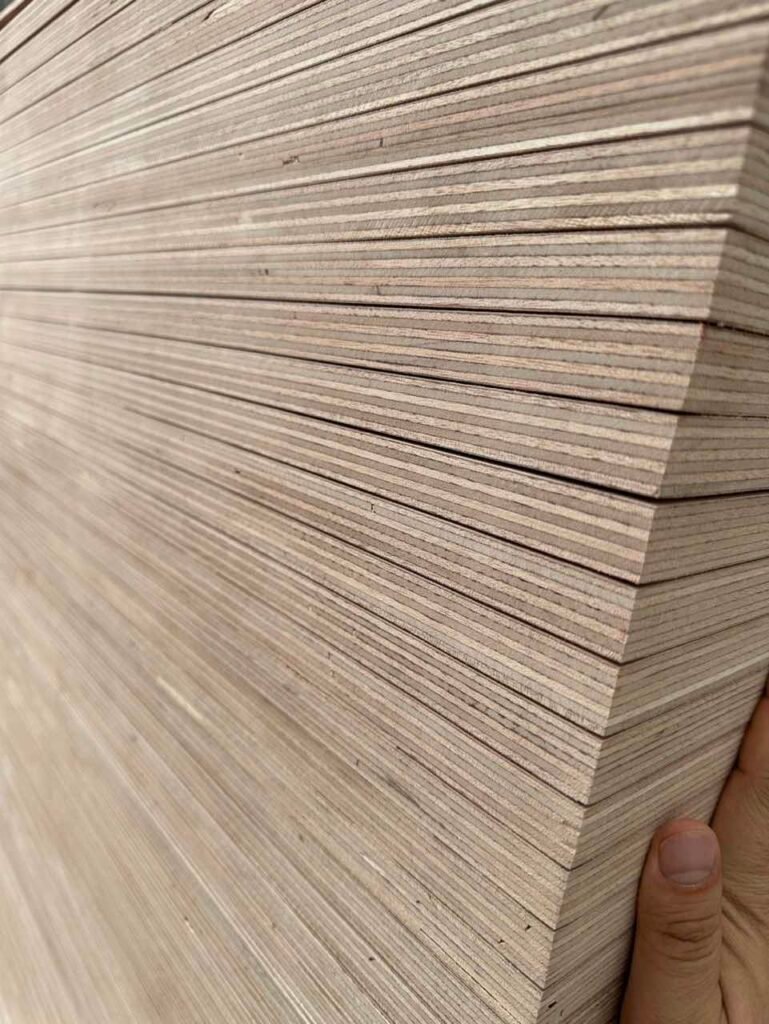Table of contents
Plywood is a widely used engineered wood product, but not all plywood performs the same under different conditions. One of the most common questions buyers ask is: What sets marine plywood apart from regular plywood? This article explains the key differences so you can make the right choice for your next project.
1.Understanding the Basics
1.1 What Is Plywood?
Plywood consists of multiple thin layers of wood veneer bonded together with strong adhesives. Manufacturers align the grain direction of each layer at right angles, which enhances stability and reduces the risk of warping. Standard plywood serves well in many interior applications such as furniture, cabinetry, wall panels, and subflooring.
1.2 What Is Marine Plywood?
Marine plywood is a high-grade plywood specifically designed for moisture-resistant and outdoor applications. It is made using waterproof phenolic or WBP glue and high-quality hardwood veneers without gaps or voids. Many industries, especially boat building and coastal construction, prefer marine plywood for its strength and water durability.

2. Key Differences Between Regular and Marine Plywood
2.1 Water Resistance
Water exposure is where the biggest difference appears. While regular plywood may swell, delaminate, or weaken when exposed to moisture, marine plywood resists water absorption, making it suitable for wet and humid conditions. This difference comes from both the waterproof glue and the superior veneer quality.
2.2 Core Composition
Standard plywood can have voids or soft spots between layers. In contrast, marine-grade plywood uses solid, defect-free core veneers, which provide higher structural strength and reduce the risk of failure under stress.
2.3 Durability and Lifespan
Because of its enhanced resistance to moisture and decay, marine plywood lasts much longer than ordinary plywood, especially in outdoor or semi-exposed environments. Builders use it for boats, docks, bathrooms, kitchens, and even coastal housing structures.
2.4 Cost Comparison
Naturally, marine plywood costs more than regular plywood due to its superior materials and manufacturing process. However, for applications where moisture is a concern, this cost delivers long-term value through better durability and fewer replacements.
3. When to Use Marine Plywood Instead of Regular Plywood
If your project involves frequent moisture, direct water contact, or high humidity, marine plywood is the better choice. For example:
- Boat decks and hulls
- Kitchen and bathroom cabinets
- Outdoor furniture
- Coastal construction projects
On the other hand, interior plywood is cost-effective for dry, indoor spaces where moisture is not a concern.
4. Final Thoughts
While both plywood and marine plywood serve vital roles in construction and manufacturing, the right choice depends on your specific needs. Marine plywood provides superior water resistance and strength, making it ideal for demanding environments. Regular plywood works well for indoor and decorative applications.
Before making a purchase, always consider the end-use, environmental exposure, and required durability. Choosing the right plywood helps prevent future damage and ensures your project stands the test of time.
✅ Bonus Tip: What to Look for in Marine Plywood
When buying marine plywood, check for:
- WBP or phenolic glue (for waterproof bonding)
- FSC certification (for sustainable sourcing)
- Okoume, Birch, or Eucalyptus cores (commonly used in marine plywood)
- Smooth surface finishes for better coating or lamination




